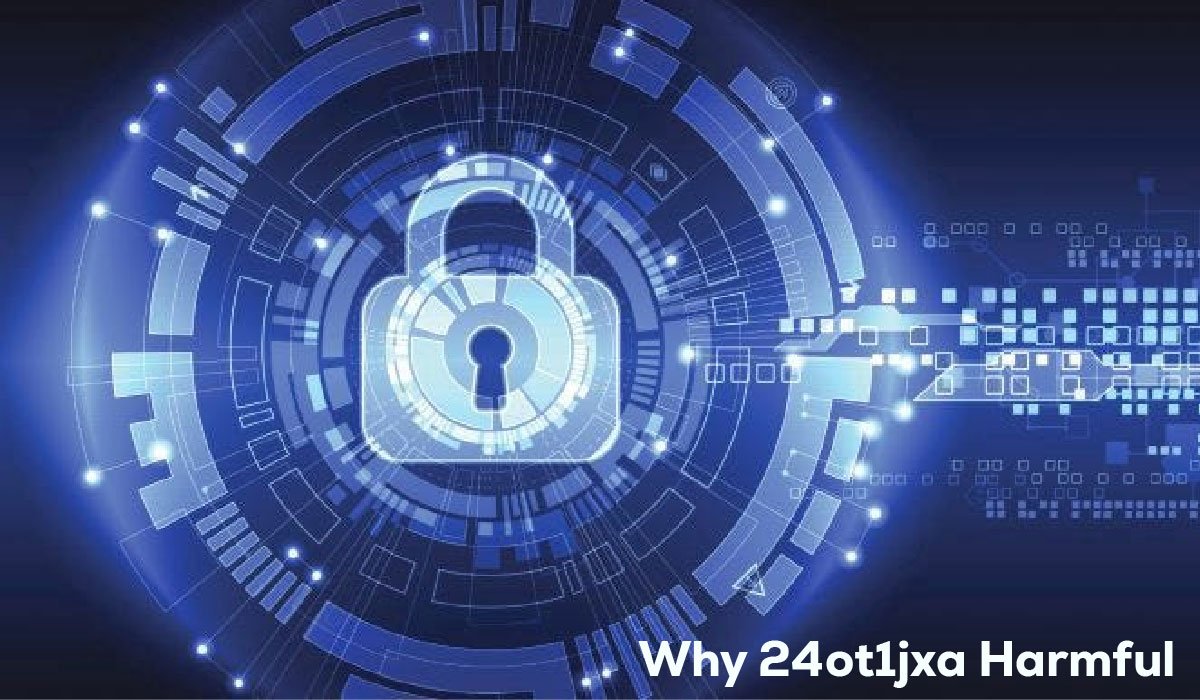Technology
Why 24ot1jxa Harmful?: Unveiling the Risks of This Stealthy Cyber Threat

Introduction to Why 24ot1jxa Harmful
In today’s increasingly digital landscape, the emergence of new threats is a constant risk to both personal and organizational cybersecurity. One such threat is 24ot1jxa, a term that is gradually gaining attention due to its association with a range of cyber threats, including malware, phishing scams, and other forms of cyberattacks. Understanding this threat is crucial, as it highlights the vulnerabilities that exist within our digital systems and the need for robust security measures. This article aims to explore the intricacies of 24ot1jxa, shedding light on why it is considered harmful and providing detailed strategies to protect against its potential damages.
What is 24ot1jxa?
24ot1jxa is often identified as a sophisticated form of malware designed to infiltrate systems silently and cause harm without immediate detection. This type of cyber threat is particularly dangerous due to its ability to remain hidden, performing malicious activities such as data theft, system damage, and privacy invasion. A common misconception about 24ot1jxa is that it is a simple virus that antivirus solutions can easily handle. However, its complexity lies in its stealth and the variety of tactics it employs to compromise data security, making it a formidable threat in the cyber world.
How 24ot1jxa Operates
The operation of 24ot1jxa is marked by its stealthy infiltration methods, which often involve phishing schemes, compromised downloads, and exploiting system vulnerabilities. Once it gains access to a system, 24ot1jxa begins a series of covert operations ranging from data extraction to the installation of backdoors for future access. Its stealth features include masking its traffic as legitimate operations and using polymorphic techniques to alter its signature, thereby evading traditional detection methods employed by most antivirus software.
The Harmful Impact of 24ot1jxa
The dangers of 24ot1jxa are extensive and multifaceted. Primarily, it poses a significant risk in terms of data theft, capturing sensitive personal and organizational information that can lead to financial fraud and identity theft. Privacy invasion is another critical concern, as 24ot1jxa can enable cybercriminals to access webcams, microphones, and log keystroke data, thus monitoring user activities without consent. Additionally, the malware can cause severe system damage, disrupting operations, corrupting files, and even rendering systems inoperable, leading to costly downtimes and recovery efforts.
Who is at Risk from 24ot1jxa?
The threat of 24ot1jxa is universal, posing risks to individuals and businesses alike. For individuals, the loss of personal data such as financial information, personal identifiers, and other sensitive data can have devastating effects. Businesses, particularly those handling sensitive customer data or those in the financial and healthcare sectors, face the risk of significant financial losses, reputational damage, and regulatory non-compliance penalties due to breaches caused by 24ot1jxa.
Read More: Unlocking Daxillzojid54: A Comprehensive Guide to Next-Gen Technology
Recognizing a 24ot1jxa Infection
Detecting a 24ot1jxa infection can be challenging due to its discreet nature. However, certain signs might indicate its presence, such as a noticeable slowdown in system performance, frequent crashes, or unexplained network traffic that could suggest data is being sent to an external server. Security software might also alert users to the presence of 24ot1jxa by detecting unusual patterns or the signatures of known variants of the malware.
Defending Against 24ot1jxa
Protecting against 24ot1jxa involves several proactive and reactive measures. Preventively, keeping software and systems updated is crucial to defend against known vulnerabilities that could be exploited by 24ot1jxa. Employing comprehensive detection tools that can identify and isolate suspicious activities on networks and devices is also essential. Should an infection occur, immediate remediation steps should include isolating affected systems, conducting thorough malware scans, and restoring systems to safe states.
Long-term Security Strategies Against 24ot1jxa
For long-term protection against threats like 24ot1jxa, regular updates and patch management are essential to close security gaps that could be exploited by attackers. Additionally, ongoing cybersecurity training for all users can help in recognizing phishing attempts and other common entry points for malware. Advanced security measures such as multi-factor authentication, encryption, and comprehensive endpoint protection solutions also play critical roles in enhancing the security posture against sophisticated malware attacks.
Conclusion: Staying Vigilant Against Cyber Threats
Understanding and mitigating the risks associated with 24ot1jxa is imperative in today’s digital age, where cyber threats are increasingly sophisticated and damaging. By staying informed about how 24ot1jxa and similar malware operate, individuals and organizations can better prepare and protect themselves from potential threats. Implementing robust cybersecurity measures, staying vigilant about system health, and fostering a culture of security awareness are crucial steps in safeguarding against the multifaceted dangers posed by cyber threats like 24ot1jxa.
(FAQs) About Why 24ot1jxa Harmful
1. What is “why 24ot1jxa harmful” referring to?
“why 24ot1jxa harmful” refers to inquiries about the potential dangers and implications of a cybersecurity threat identified by the term 24ot1jxa. This term is commonly associated with a type of malware or cyber threat that compromises data security, privacy, and system integrity.
2. How does “why 24ot1jxa harmful” affect personal computers?
“why 24ot1jxa harmful” impacts personal computers by infiltrating them with malware that can steal sensitive information, such as financial data and login credentials, install additional harmful software, and significantly degrade the system’s performance and security.
3. Why should organizations be concerned about “why 24ot1jxa harmful”?
Organizations should be concerned about “why 24ot1jxa harmful” because it can lead to substantial data breaches, loss of sensitive or proprietary information, financial losses, and damage to reputation. Additionally, recovery and legal costs associated with these breaches can be significant.
4. Can “why 24ot1jxa harmful” be detected and removed by antivirus software?
While some advanced antivirus software can detect and remove elements of “why 24ot1jxa harmful,” this malware often uses sophisticated techniques to evade detection. Regular updates to antivirus programs and employing multiple layers of cybersecurity measures are recommended for better protection.
5. What are the signs that “why 24ot1jxa harmful” has infected a system?
Signs that “why 24ot1jxa harmful” might have infected a system include unusual system slowness, frequent crashes, unexpected pop-up ads, and unauthorized changes to system settings or files. Monitoring network traffic for unusual outbound communication can also indicate an infection.
6. How can individuals protect themselves from “why 24ot1jxa harmful”?
Individuals can protect themselves from “why 24ot1jxa harmful” by updating their software regularly, avoiding clicking on suspicious links or downloading attachments from unknown sources, using strong, unique passwords for different accounts, and employing reputable security solutions with real-time protection features.
7. What should be done if “why 24ot1jxa harmful” is suspected on a network or device?
If “why 24ot1jxa harmful” is suspected, immediately isolate the affected system from the network to prevent further spread. Run a full system scan with updated antivirus software, change all passwords, and consider a professional cybersecurity assessment to ensure all traces of the malware are removed.
8. How does “why 24ot1jxa harmful” spread among devices?
“why 24ot1jxa harmful” spreads through various methods such as phishing emails, malicious attachments, compromised websites, and sometimes through vulnerabilities in network security that allow it to infect other devices connected to the same network.
9. What long-term effects can “why 24ot1jxa harmful” have on a business?
Long-term effects of “why 24ot1jxa harmful” on a business can include ongoing security vulnerabilities, loss of customer trust, reduced sales, and the potential for recurring cyber attacks if initial threats are not fully eradicated and security improvements are not implemented.
10. Are mobile devices also at risk from “why 24ot1jxa harmful”?
Yes, mobile devices are also at risk from “why 24ot1jxa harmful.” Mobile versions of this malware can access and steal personal information, intercept communications, and even take over device functions. Maintaining updated mobile operating systems and installing mobile-specific security applications are crucial steps to protect against such threats.
More News And Stories Visit News Reflect
-

 Blog5 months ago
Blog5 months agoDixkidzoz: Unraveling the Creative Phenomenon
-

 Blog5 months ago
Blog5 months agoExploring Haxillzojid54: Unveiling the Mystery Behind the Digital Phenomenon
-

 Technology5 months ago
Technology5 months agoHow to Use Morjier255: A Comprehensive Guide to Maximizing Productivity
-

 Blog5 months ago
Blog5 months agoQiowofvuhoz: A Comprehensive Framework for Personal and Professional Growth








